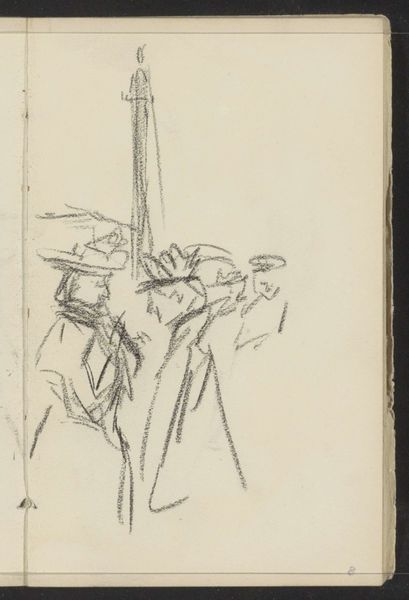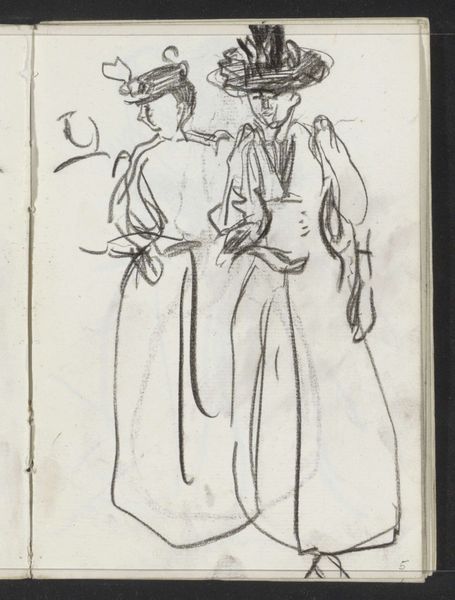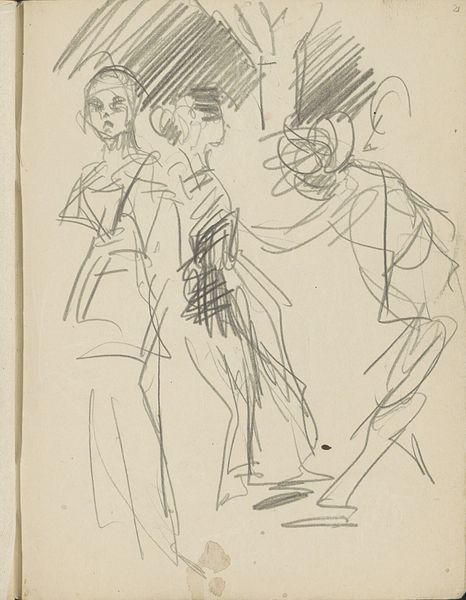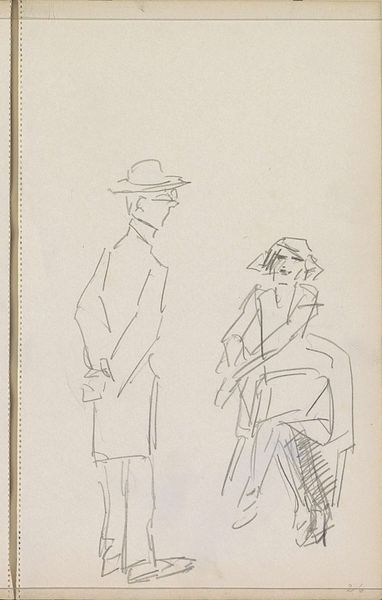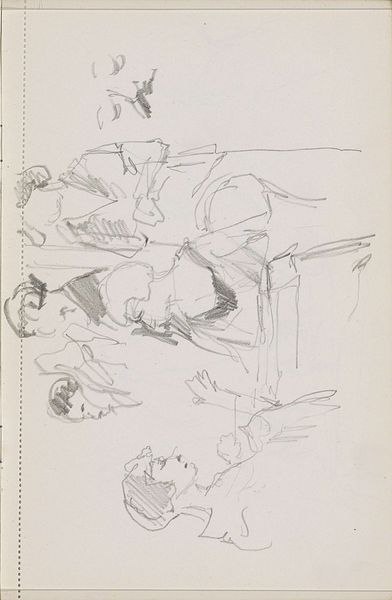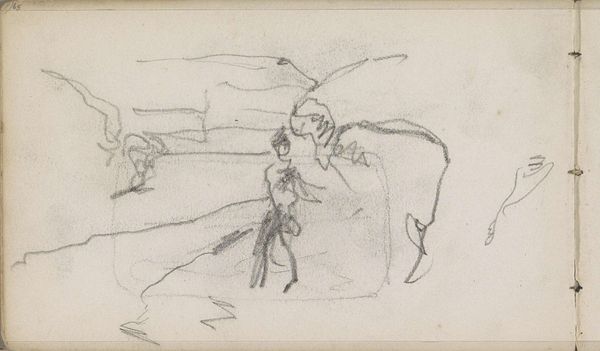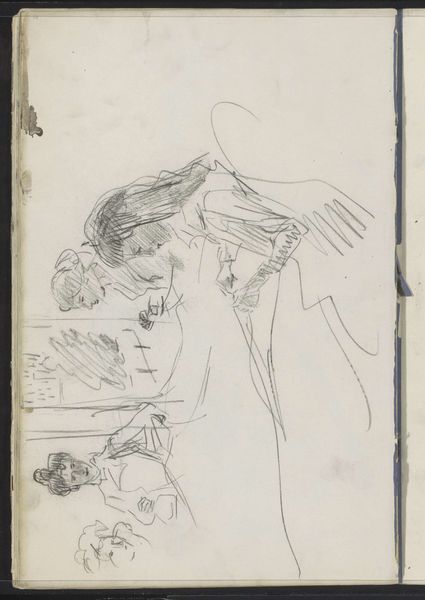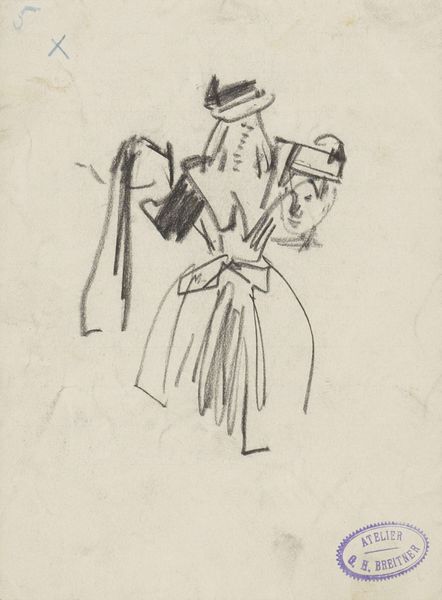
Copyright: Rijks Museum: Open Domain
Curator: What strikes me immediately about Isaac Israels' "Drie vrouwen in gesprek" is its raw, immediate quality. The swift pencil strokes capture a sense of fleeting interaction. Editor: It does have an interesting immediacy. What is quite striking, from my perspective, is Israels’ choice to represent these women, presumably middle-class, caught in what seems like an everyday social ritual. This intimate glimpse speaks volumes. Curator: Absolutely, it’s the ‘everyday’ that’s so compelling. Look at the texture created by the pencil on paper – the roughness of the sketch contrasts with the delicate curves suggesting their clothing. He focuses more on gesture than perfect representation, conveying the feeling of a casual encounter rather than staging a formal portrait. What can you tell me about its history? Editor: Israels was really fascinated by representing modern life. This drawing, dating from 1887-1934, aligns with his Impressionist interests but also reveals a sharp observation of women's social roles. Museums have often emphasized canonical narratives of male genius. Israels presents a counterpoint—a study of women's voices and their shared world. And notice how accessible that makes the artwork itself. Curator: Indeed, and thinking about production, the accessibility is inherent in the medium. A quick pencil sketch versus a labored oil painting indicates very different intentions. This probably comes directly from a sketchbook. The roughness suggests he wasn't trying to create a pristine object. Editor: Exactly. Its presence here in the Rijksmuseum is not merely about the artist's hand; it's about recognizing a piece of social fabric captured in time. Consider how the museum's display shapes our understanding, legitimizing what was once a private, portable study for public appreciation and analysis. Curator: That really changes our reading of this work. Seeing that context really deepens my understanding of how we're supposed to interact with this seemingly intimate scene. It prompts you to question: what else was left out? Editor: Indeed, I leave now thinking of what else he sketched—and what institutions choose to show us of that output. It definitely makes one think.
Comments
No comments
Be the first to comment and join the conversation on the ultimate creative platform.

